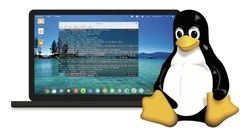Linux Beginner’s Guide: The Complete Introduction to Linux for 2025

Linux is a powerful, open-source operating system that powers everything from smartphones to supercomputers. Whether you’re a student, developer, or IT professional, learning Linux can significantly boost your career. This comprehensive guide will help you get started with Linux step-by-step.
What Is Linux?
Linux is a Unix-like operating system kernel created by Linus Torvalds in 1991. Today, Linux powers most of the world’s servers, Android devices, embedded systems, and many desktop computers.
Why Learn Linux?
- It’s open-source and free.
- High demand in the job market (especially in system administration, DevOps, cybersecurity).
- Flexibility and control for users and developers.
Key Concepts to Learn
- Terminal and Command Line: Learn how to navigate the Linux filesystem, run commands, and manage files.
- User Management: Understand users, groups, and permissions.
- Package Management: Install and update software using tools like
apt,yum, ordnf. - File System Structure: Know what
/home,/etc,/var, and/usrdirectories do. - Basic Shell Scripting: Automate tasks with simple scripts.
Best Linux Distributions for Beginners
- Ubuntu: User-friendly, large community.
- Linux Mint: Clean interface, great for Windows users.
- Fedora: Cutting-edge technology, backed by Red Hat.
Practical Tips for New Users
- Use a virtual machine (VM) to test Linux.
- Bookmark man pages and online resources.
- Don’t be afraid to experiment.
By mastering the basics, you’ll gain the confidence to explore advanced areas like server administration, automation, and security.
Meta Description: Start your Linux journey with this complete beginner’s guide. Learn Linux basics, commands, distributions, and tips for new users in 2025.
SEO Keywords: Linux guide 2025, learn Linux, Linux for beginners, Linux distributions, command line basics
What is Linux? and How Does Linux Work?
Linux isn’t just an operating system — it’s a philosophy. Understanding how it works gives you a strong foundation in computing. In this article, we break down the components of Linux and how they interact.
Core Components of Linux
- Kernel: The brain of the system. Manages hardware, memory, processes, and system calls.
- Shell: Command-line interface that interprets your commands.
- File System: Hierarchical structure that organizes files.
- Daemons: Background services that perform tasks (e.g., cron jobs, network management).
How Linux Boots
- BIOS/UEFI performs POST.
- Bootloader (e.g., GRUB) loads the kernel.
- Kernel initializes devices and mounts root filesystem.
initorsystemdstarts essential services.
How Processes Are Managed
Linux uses process IDs (PIDs) and system calls to manage processes. You can monitor them with commands like ps, top, or htop.
Interacting with Hardware
Linux supports most hardware out of the box. Device drivers are either built into the kernel or available via modules.
Meta Description: Discover how Linux works from kernel to shell. Learn about its architecture, boot process, file system, and more in this beginner-friendly guide.
SEO Keywords: how Linux works, Linux kernel, Linux boot process, Linux architecture, Linux basics

